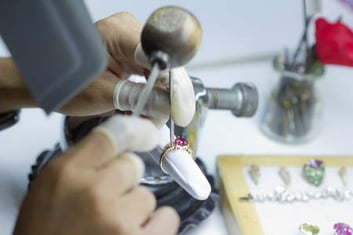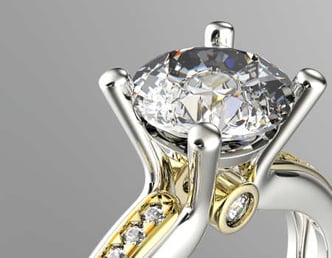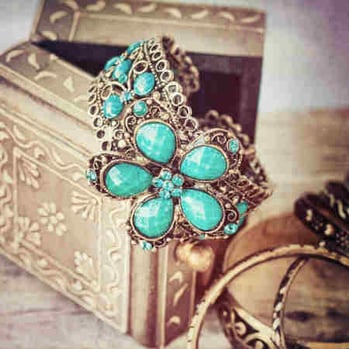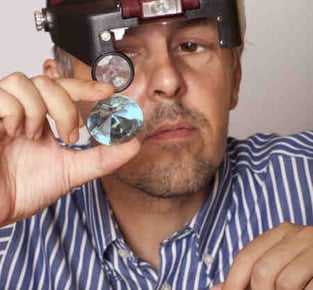 Women’s jewelry is considered to be one of the most purchased items in the global market. In fact, jewelries for women are being sold at an average of 4.5 billion dollars annually. Depending on the type of women’s jewelry, their prices could go as cheap as $10 dollars to something as luxurious as a million dollars.
Women’s jewelry is considered to be one of the most purchased items in the global market. In fact, jewelries for women are being sold at an average of 4.5 billion dollars annually. Depending on the type of women’s jewelry, their prices could go as cheap as $10 dollars to something as luxurious as a million dollars.
Because of the different price ranges available for women’s jewelry, it is easier for consumers to choose from a wide variety of jewelries that have decent quality to very high quality materials. As of 2012, there are still two ways of making women’s jewelry; the conventional way, which is handmade jewelry; and mass-produced jewelry, which are cheaper, durable and reliable for its price range. In this article, we'll discuss jewelry inspection processes.
Types of women’s jewelry
Due to the popularity of women’s jewelries, several jewelers find it a habit to create new designs to attract more people into buying jewelries. Regardless of the designs available on jewelries, most jewelry manufacturers aim on focusing on the most common jewelry types around the world today. Here are some of women’s jewelries being produced on a regular basis:
Bracelet – one of the most common fashion accessories for ladies. With so many styles to choose from, bracelets are women’s jewelry that will never go out of style. Other types of bracelets are:
- Bangles
- Beaded Bracelet
- Slap Bracelet
Necklace – necklaces vary by length, depending on the materials and purpose of the necklace, sizes and designs may vary.
Ring – rings are the most used women’s jewelry today because it is one of the traditions it bring in the society. Rings have similar styles but come in different designs, composition and value.
Earrings – just like rings, earrings are also the most used fashion accessories due to its thriving tradition and meaning. Here are the different types of earrings:
- Stud Earrings
- Hoop Earrings
- Dangle Earrings
- Huggy Earrings
Anklet – anklets are fashion accessories that can truly accentuate a women’s leg (or legs). Anklets come in different styles and materials and they all vary by quality and value.
Women's jewelry inspection process
Because of the different quality control standards listed above, a lot of consumers today expect that all of the products being produced are of high quality and are damage and defect free. Women’s jewelries under mass production are required by United States law to be inspected for any harmful contents to ensure safe use.
To fully understand the inspection processes to be taken on different women’s jewelry, this article will categorize the production process for handcrafted jewelries and machine-made jewelries. But regardless of the style of jewelry making, the inspection processes done with all of the jewelries are identical in nature. Here are the inspection processes being performed on women’s jewelries today:
Pre-production jewelry inspection
All of the machines and/or crafting devices to be used for both handcrafted women’s jewelry and machine-made women’s jewelry will undergo a thorough inspection to verify that all of the parts are in working order. The purpose of this inspection process is to ensure that all of the machines and/or devices to be used during production are free from damage, loose parts, or any other anomalies that can disrupt the production process.
Machines and devices that show signs of damage or defects should be reported, repaired and/or replaced prior to the initial assembly phase to ensure that no defective products will be manufactured as much as possible.
Raw materials inspection
Regardless of the assembly process, each raw material to be used for women’s jewelry will be thoroughly inspected for any lumps, molds, cracks, blemishes and other pre-production anomalies that could take place. The purpose of this inspection process is to verify that all of the materials to be used for assembly are in working order and are free from any imperfections.
Materials that pose a threat to the overall design and construction of various women’s jewelries are subject to re-evaluation to determine if the pieces can still be used or not to ensure that all of the materials to be assembled would come out as expected.
Craft and assembly inspection
All of the materials that passed the raw materials inspection are subject to profiling to ensure that all of the materials and tools needed for the overall master design are complete and in working order. The purpose of this inspection process is to verify that all of the materials are complete and that the production process receives little to no defective final products to ensure that all of the jewelries are monitored under strict supervision.
Although it is widely accepted that defective final products for mass-produced women’s jewelry are more likely to happen compared to handcrafted women’s jewelry, it is important that obvious defective products are not to be used for the remainder of the production process to ensure that all of the jewelries are in excellent condition.
Design and construction Inspection
Depending on the type of women’s jewelry being assembled, there are different processes that needs to be performed during this queue to ensure that the master design of all the women’s jewelry in production are identical to the ones being created during this process. Here are some of the steps and inspection processes needed during this queue:
 Master Model Making and Construction (mass-produced women’s jewelries)
Master Model Making and Construction (mass-produced women’s jewelries)
The process involved with master model making and construction consists of creating a master model for the piece to be mass-produced to ensure that all of the finished products are identical to the master copy. Items that fail this process are automatically considered as “DEFECTIVE” and will not be used for the remainder of the production process.
Gem Cutting and Matching
The process involved includes measuring and analyzing the different stones and gems to be used on various women’s jewelry to ensure that all of the pieces to be assembled and crafted have the same specifications for the piece being constructed. Gems that fail the matching process will be cut into its appropriate size to compensate on other jewelries under construction.
Wax Injection and Casting
The process of which wax and rubber molds will be created to match the master design of the women’s jewelry in production. Once wax has been injected on each piece, proper casting should be enforced to ensure that all of the women’s jewelries are made the right way.
Pre-finishing
Prior to visual inspections, final inspections and testing, all of the women’s jewelries in production will undergo pre-finishing where each piece will be removed from its casting and will be inspected for its overall shape and construction. Items that fail to form as expected will be marked as “DEFECTIVE” and will not be used for the remainder of the production process.
Polishing and Plating
After the casting process, all of the jewelry pieces will undergo plating and polishing to ensure that all of the jewelries have the appropriate coating or plating according to its product specifications to ensure that all of the products are constructed correctly.
Coating inspection
The purpose of this inspection process is to ensure that all of the pieces that have been visually inspected are ready for the coating inspection where each jewelry piece will be tested for its appropriate coating conditions as per product specifications.
Items that have poor coating or have visible cracks on lines after coating will be re-evaluated to save overall production time. Since most women’s jewelries require coating, items that fail this process will not be considered as “DEFECTIVE.” Instead, they will be recoated to ensure that proper coating has been done.
Visual inspection
Women’s jewelries that came right out of the production process will be stored at least overnight (or when pieces are already cooled down) to ensure that no dents can be made while conducting the visual inspection. The purpose of this inspection process is to verify that all of the finished products are free from any defects such as blemishes, dents, bubbles, stains and other production anomalies that could take place to ensure that all of the women’s jewelries under construction are free from known imperfections prior to shipping and distribution.
conducting the visual inspection. The purpose of this inspection process is to verify that all of the finished products are free from any defects such as blemishes, dents, bubbles, stains and other production anomalies that could take place to ensure that all of the women’s jewelries under construction are free from known imperfections prior to shipping and distribution.
Soldering – items that have attached gemstones or other precious stones will be tested for its strength in containing the material attached to its soldering latches. Items that fail the process will be revaluated as usual to ensure that the latches for gems are reliable enough regardless of the value.
Depending on the value of the jewelry being inspected, proper pass-fail checklists should be used to ensure that all of the information regarding the jewelry has been checked for accuracy as per product specifications. Items that fail the inspection process will be re-evaluated unless proven beyond repair.
Final jewelry inspection and testing
The purpose of this process is to ensure that all of the women’s jewelry in production that have undergone the different inspection processes and tests are more than qualified for shipping and distribution. Each piece will undergo final random inspections to verify that all of the women’s jewelries under construction are eligible for their corresponding quality control standards for consumer’s peace of mind.
Items that fail the final inspection and testing are automatically considered as “DEFECTIVE” and will be salvaged for precious metals and stones to ensure that defective metals and stones are not put to waste. Items that fail will be melted and will go back to phase one of the production process.






